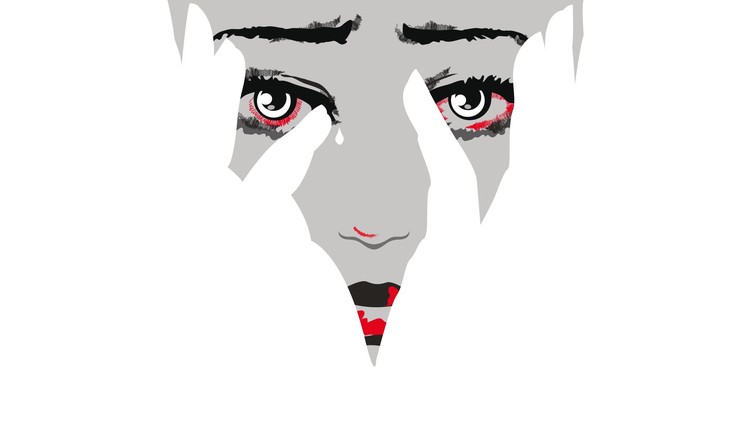In an article published online by the Journal of Humanistic Psychology on 3/7/18, I argue that the mainstream view of “psychosis” is way too narrow, and I outline the evidence supporting a wider perspective, and reasons to believe such a view would allow us to be much more effective in our attempts at helping people.
Here’s the abstract for the article:
“Evidence that psychosis always has a biological cause appears lacking, while evidence that it can be a reaction to life events appears increasingly strong. A broader approach may therefore be required, one allowing for the possibility of psychosis emerging, independently of biological causes, when a person’s understandable attempts to solve difficult problems inadvertently create more problems. Efforts by helpers to simplistically explain or suppress psychosis may also then backfire and increase difficulties. Restoring balance may require accepting and integrating psychotic experiences, neither overvaluing them nor dismissing them as being without value. Some methods of working toward this goal are identified and discussed.”
This article is part of a part of a 20 author, invited Journal of Humanistic Psychology 2018 special edition on extreme states that’s titled-“Humanistic Perspectives on Understanding and Responding to Extreme States.” edited by my friend and colleague Michael Cornwall. These articles are currently being published online and the hard copy edition of the journal will be out later this year. I expect there will be lots of great articles in this edition!
Payment is required to view the published version of my article, but I’m sharing below the draft submitted to the journal:
A tale is commonly told of science narrowing in on an understanding of psychotic disorders such as schizophrenia – they are an illness of the brain, caused by genetic risk factors, biochemical imbalances (Deacon, 2013), and faulty circuits amongst neurons (Insel, 2010). Psychoeducational materials confidently inform families that “people do not cause it” (Glynn, 2014) – that is, it is not caused by interpersonal experience or personal mistakes.
But do the narrower views of psychosis really follow from evidence, or do they rest more on prejudice?A point worth noting is that even if brain differences reliably correlated with psychosis were eventually found, a causal role for biology would still be uncertain. That is because brains evolved to respond to the environment. Brains do not have one “normal” chemical state, or a fixed pattern of circuits, but rather patterns that vary depending on interactions and challenges. And while certain biochemical and structural “brain differences” have frequently, but far from always, been seen in people diagnosed with schizophrenia, similar differences have also been found disproportionately in the brains of child abuse victims (Read, Fosse, Moskowitz, & Perry, 2014). Focusing exclusively on the brain as the source of problems can mean ignoring the significance of what happened to people.
Psychosis can occur when something biologically goes wrong with the brain (Griswold, Del Regno, & Berger, 2015), but it does not follow that this is the only possible cause. Substantial research indicates that childhood adversity strongly increases risk of psychosis (Varese et al., 2012). And while some who become psychotic after adverse events may have had preexisting vulnerabilities due to biological causes, it remains possible that many others did not.
“Jumping to conclusions” is a common dynamic in psychosis, a contributor to the formation of delusions (D. Freeman et al., 2014). So it is ironic to observe that the “progress” made by “narrowing in” on understanding psychosis as definitely due to biological defect seems to be itself a conclusion jumped to without good evidence.
Linguistic styles common in psychiatry can also contribute to narrow thinking. Consider the following exchange:
“Why is he having these strange experiences?” “It’s caused by his schizophrenia.” “But how do you know he has schizophrenia”? “The diagnosis can be made based on his strange experiences!”
The logic is circular and empty, but professionals lacking “insight” into this emptiness may become both certain they understand the cause of someone’s experience and profoundly uncurious about alternative possibilities. Further, individuals socialized into this model may be pressured to abandon attempts to relate to their own experiences as possibly meaningful reactions to life events, and to instead join with professionals in seeing those experiences as definitely an illness that requires suppression.
Fortunately, there are alternative ways for professionals and other helpers to approach these issues, ways based on encouraging curiosity rather than suppressing it, and on avoiding narrow conclusions and non-explanations rather than jumping into them. Examples developed in recent decades include the Open Dialogue approach, which emphasizes toleration of uncertainty as a core principle (Seikkula et al., 2006); CBT for psychosis, which emphasizes joint exploration of experiences and possible interpretations (A. Morrison, Renton, Dunn, Williams, & Bentall, 2004); and the hearing voices network, which promotes open minded sharing of possible understandings and paths forward (Corstens, Longden, McCarthy-Jones, Waddingham, & Thomas, 2014).
While these approaches all embrace uncertainty, they can still be systematic. One practice within CBT for example is that of developing a formulation (A. Morrison et al., 2004). This involves collaboratively working with people to map out all factors and interactions that may have led to psychosis. Different perspectives or “voices,” and justifications for different perspectives, can be considered, and it is understood that any maps that are developed may be only partially correct, with more to be discovered.
These formulations can be highly individualized, and can address not only possible factors like adverse childhood experiences and other life difficulties, and perhaps pre-existing biological differences, but also psychological and behavioral reactions to those experiences and differences. This is important, because while it appears psychosis can result from catastrophic interactions between different factors in people’s lives (Fowler, 2006), understanding those interactions can suggest ways to change reactions and relationships so as to promote recovery (A. Morrison et al., 2004).
A related approach is normalizing (Hagen, 2010), or considering how the psychosis could be simply a more extreme version of the confusion we all experience at times as we struggle in relationship with a tricky world, and with tricky brains. In this view, psychosis is not a state categorically different from everyday functioning, but is on a continuum with common difficulties.
Research suggests for example that when “normal” people lack an obvious way to control aspects of their lives, their minds open up to consider more patterns as being possibly relevant, and in so doing they become more vulnerable to seeing illusory patterns, to seeing signals in noise, and to developing paranoid explanations, etc. (Whitson & Galinsky, 2008). It makes sense to consider the possibility that more extreme versions of this sort of attempt at problem solving may lead to psychotic experiences, and this could also explain difficulty in ignoring irrelevant stimuli, which is considered to be one of the central attentional deficits in schizophrenia (Anscombe, 1987).
Conversely, there are times when “normal” people see too many options, and may see a need to close their minds in order to stabilize around a certain approach (Kruglanski & Webster, 1996). Going to extremes in this process of closing the mind to new input or perspectives, perhaps in response to having been “too open” at other times, may explain some of the rigidity of belief often found in psychosis.
So both opening and closing the mind can be understood as strategies used in the attempt to solve particular kinds of problems. Both strategies can backfire, as people can open too far, resulting in “false positives” or they can close prematurely, rigidly ignoring information not fitting their beliefs. When people feel threatened, willingness to try extreme measures may increase, and people may jump from one extreme to another. Going to these extremes may itself cause problems but can nevertheless be understood as part of attempts to solve problems, a process fundamentally normal and even healthy, though in need of moderation.
The above provides just one example of how people may be challenged to move in competing and contrary directions. Others include the need for autonomy vs. the need for closeness (Williams, 2014), the need to create stories that promote self-esteem vs. need for self-criticism and realism (Daniel Freeman et al., 2004), the need to set traumatic memories aside in order to focus on everyday existence vs. the need to focus on and understand traumatic events so as to avoid recurrence (Van der Hart, Nijenhuis, & Steele, 2006), and many other such polarities.
Once people lose balance in regard to any such polarities, they may consciously identify with moving toward one polarity, while viewing mental activity moving toward the other as alien to self. When that “alien” mental activity continues despite attempts to stop it, helplessness and confusion can occur, and bizarre explanations may be developed, for example blaming this mental activity on something like the presence of literal aliens, an implant placed by the CIA, a demon, or perhaps just “voices” (A. P. Morrison, Frame, & Larkin, 2003).
A psychiatric explanation may then propose that this unwanted mental activity is due to the person’s “illness,” perhaps “schizophrenia.” Such an explanation suggests a goal of suppression rather than integration. And when attempts at suppression don’t work, helplessness can be magnified, leading to people perceiving themselves as the passive victim of an active illness.
A broader understanding of human beings suggests a more integrative approach, something more like peacemaking, where legitimate needs are found and recognized on both sides of a conflict.
A good example of the dynamics being discussed here can be found in the story of Eleanor Longden. Early in her treatment, she was told that the single, relatively benign voice she was experiencing meant she had schizophrenia, and that this voice needed to be suppressed. But her own and psychiatric attempts at suppression backfired, and within months she was faced with 12 very hostile voices. She then became unable to resist them, as they convinced her of their power and commanded self-harm. Healing was impossible until she eventually shifted to a broader, more “middle ground” approach: learning to resist following the voices’ commands or concluding that they spoke literal truth, while also becoming more receptive to the possibility they were metaphorically telling her about things like past traumas, and/or current insecurities (Longden, 2013).
The hearing voices movement has asserted that hearing voices and related “psychotic” experiences need not be understood as “symptoms,” but can instead be seen as a human difference, like being left handed. These experiences can lead to big problems when people do not know how to relate to them, but what people need is not suppression, but help finding ways to relate differently to voices and the emotions behind them (Romme, 2012).
That is, listening too uncritically to voices and being overly influenced by such experiences can lead to many dangers, and can be “madness.” But completely failing to listen to what these experiences may mean, narrowly interpreting them as the result of biological defect in the absence of good evidence, and focusing on suppression rather than regulation and integration, can also be very dangerous, and so may also be realistically described as mad!
An alternative is for helpers to join with others having these experiences in facing them in a less polarized way. When we are all just humble enough about our own understandings, we may become open enough to other perspectives, including those that seem “mad,” to discover possibilities for a path forward, toward integration and perhaps a deeper sense of humanity for all involved.
Anscombe, R. (1987). The disorder of consciousness in schizophrenia. Schizophr Bull, 13(2), 241-260.
Corstens, D., Longden, E., McCarthy-Jones, S., Waddingham, R., & Thomas, N. (2014). Emerging perspectives from the hearing voices movement: implications for research and practice. Schizophr Bull, 40 Suppl 4, S285-294. doi:10.1093/schbul/sbu007
Deacon, B. J. (2013). The biomedical model of mental disorder: a critical analysis of its validity, utility, and effects on psychotherapy research. Clin Psychol Rev, 33(7), 846-861. doi:10.1016/j.cpr.2012.09.007
Fowler, D., Freeman, D., Steel, C., Hardy, A., Smith, B., Hackman, C., Kuipers, E., Garety, P., & Bebbington, P. (2006). The catastrophic interaction hypothesis: How do stress, trauma, emotion and information processing abnormalities lead to psychosis? In W. Larkin, & Morrison, A.P. (Ed.), Trauma and Psychosis: New Directions for Theory and Therapy: Taylor & Francis.
Freeman, D., Garety, P. A., Fowler, D., Kuipers, E., Bebbington, P. E., & Dunn, G. (2004). Why do people with delusions fail to choose more realistic explanations for their experiences? An empirical investigation. JOURNAL OF CONSULTING AND CLINICAL PSYCHOLOGY, 72(4), 671.
Freeman, D., Startup, H., Dunn, G., Cernis, E., Wingham, G., Pugh, K., . . . Kingdon, D. (2014). Understanding jumping to conclusions in patients with persecutory delusions: working memory and intolerance of uncertainty. Psychol Med, 44(14), 3017-3024. doi:10.1017/s0033291714000592
Glynn, S. M., Cather, C., Gingerich, S., Gottlieb, J. D., Meyer, P. S., Mueser, K. T., & Penn, D. L. . (2014). NAVIGATE Family Education Program Retrieved from https://raiseetp.org/StudyManuals/Family%20Manual.pdf
Griswold, K. S., Del Regno, P. A., & Berger, R. C. (2015). Recognition and Differential Diagnosis of Psychosis in Primary Care. Am Fam Physician, 91(12), 856-863.
Hagen, R. (2010). CBT for psychosis : a symptom-based approach. Hove, East Sussex: Routledge.
Insel, T. R. (2010). Faulty circuits. Sci Am, 302(4), 44-51.
Kruglanski, A. W., & Webster, D. M. (1996). Motivated closing of the mind: “seizing” and “freezing”. Psychol Rev, 103(2), 263-283.
Longden, E. (2013). Learning from the Voices in My Head Retrieved from https://www.amazon.com/Learning-Voices-Head-Books-Book-ebook/dp/B00ECJNSS6
Morrison, A., Renton, J., Dunn, H., Williams, S., & Bentall, R. (2004). Cognitive therapy for psychosis : a formulation-based approach. Hove [England] ; New York: Routledge.
Morrison, A. P., Frame, L., & Larkin, W. (2003). Relationships between trauma and psychosis: a review and integration. British Journal of Clinical Psychology, 42(4), 331-353.
Read, J., Fosse, R., Moskowitz, A., & Perry, B. (2014). The traumagenic neurodevelopmental model of psychosis revisited. Neuropsychiatry, 4(1), 65-79. doi:10.2217/npy.13.89
Romme, M. A. J., & Escher, S. (Ed.) (2012). Psychosis as a personal crisis: An experience-based approach. London: Routledge.
Seikkula, J., Aaltonen, J., Alakare, B., Haarakangas, K., Keränen, J., & Lehtinen, K. (2006). Five-year experience of first-episode nonaffective psychosis in open-dialogue approach: Treatment principles, follow-up outcomes, and two case studies. Psychotherapy Research, 16(2), 214-228.
Van der Hart, O., Nijenhuis, E. R., & Steele, K. (2006). The haunted self: Structural dissociation and the treatment of chronic traumatization: WW Norton & Company.
Varese, F., Smeets, F., Drukker, M., Lieverse, R., Lataster, T., Viechtbauer, W., . . . Bentall, R. P. (2012). Childhood adversities increase the risk of psychosis: a meta-analysis of patient-control, prospective- and cross-sectional cohort studies. Schizophr Bull, 38(4), 661-671. doi:10.1093/schbul/sbs050
Whitson, J. A., & Galinsky, A. D. (2008). Lacking control increases illusory pattern perception. Science, 322(5898), 115-117.
Williams, P. (2014). Rethinking madness: Towards a paradigm shift in our understanding and treatment of psychosis: Sky’s Edge Publishing.



